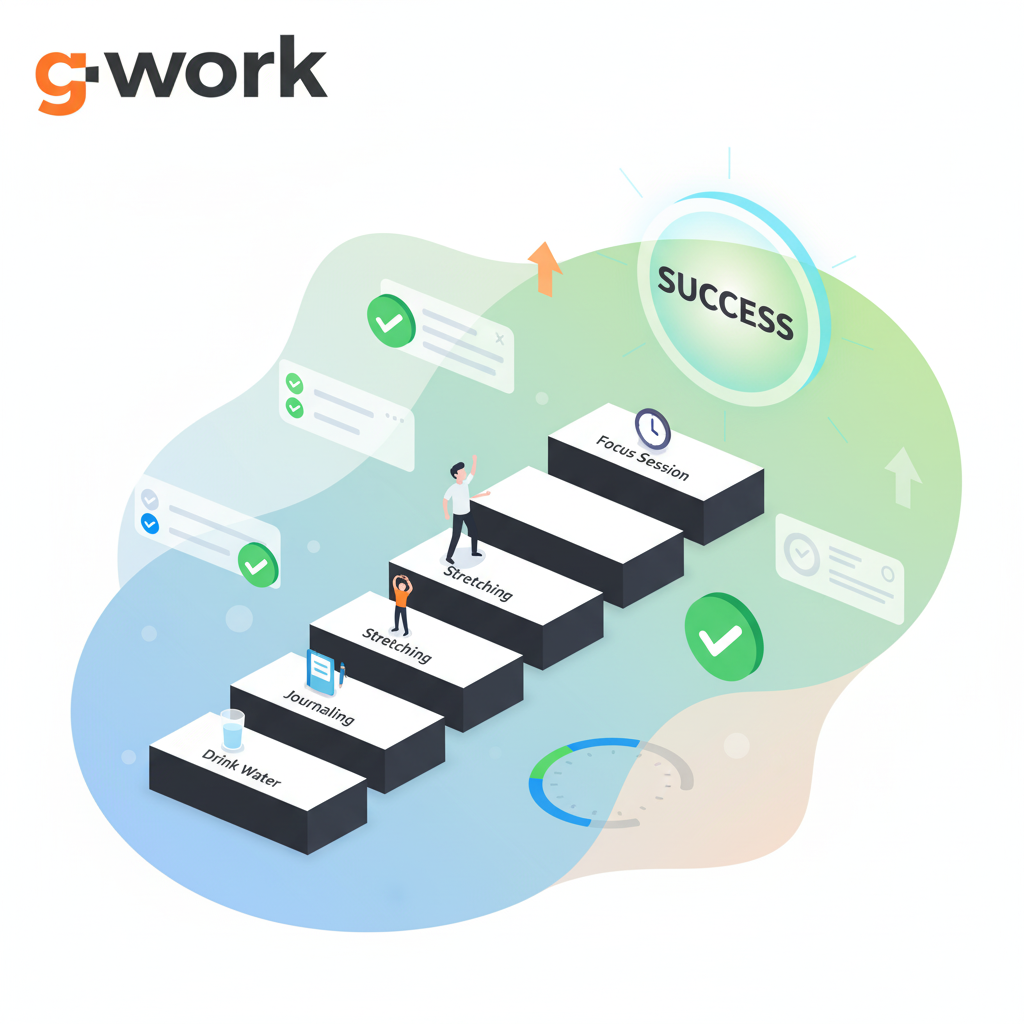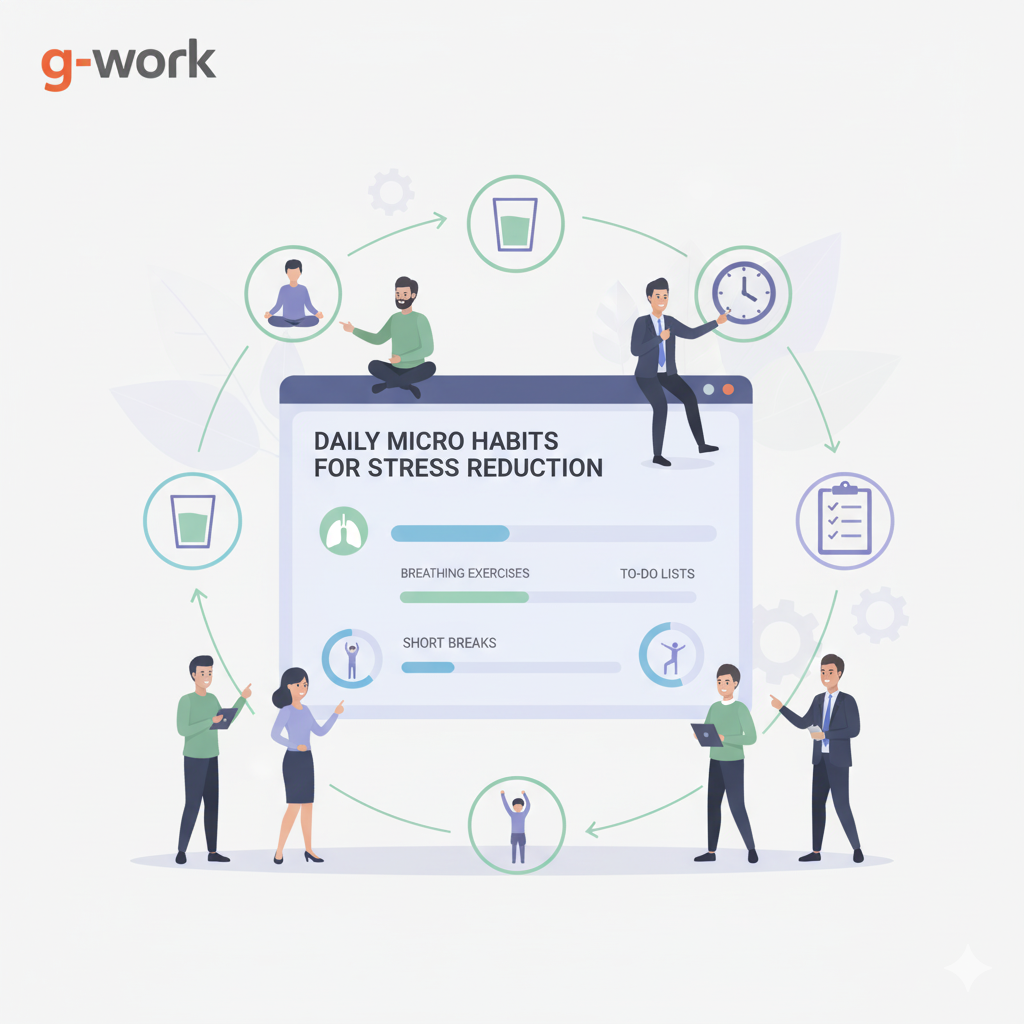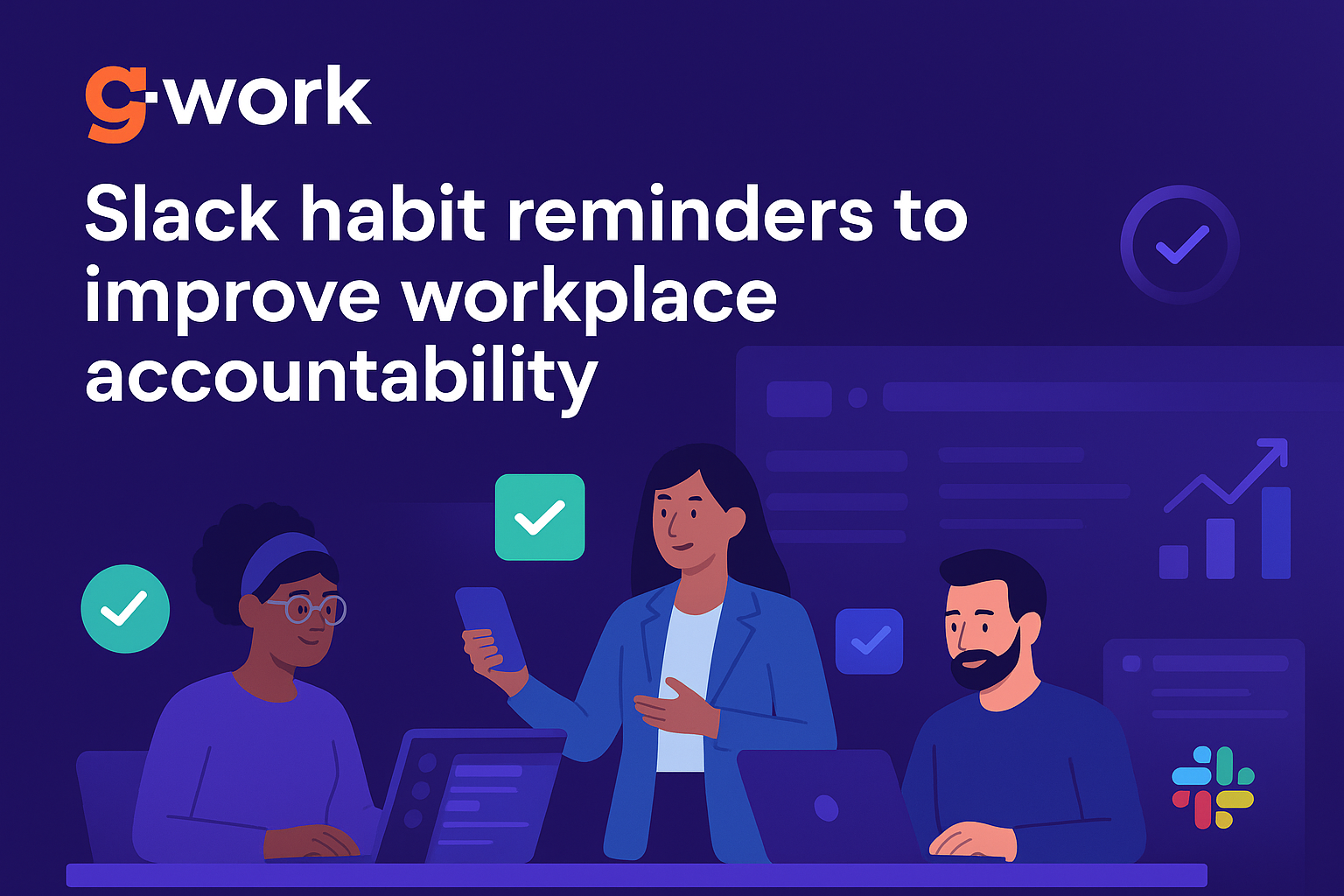Silent killers of productivity in the workplace are stress. It gradually enters into the day-to-day activities, it is also manifested in missed deadlines, team demoralization and when unaddressed, it ultimately burns out. In the modern work environment, with emails coming every few minutes, one back-to-back meeting after another, deadlines building up, stress is inevitable among many employees.
As per research, the effects of chronic stress in the workplace do not solely include the mental well-being: it also encompasses the physical well-being, sleep quality, decision-making processes, and even creativity. To businesses this means decreased staff involvement, increased absenteeism and decreased performance. That is, untamed stress is more expensive to employees and businesses than they can imagine.
The good news? Stress does not necessarily require massive interventions in order to decrease. Though such programs as therapies, wellness courses, or week-long holidays are beneficial, they cannot be used in everyday life. Employees feel this but what they actually require is small, practical steps that they can take during the day to refresh their minds, unwind their bodies, clear their minds.
It is here that micro habits play their role.
Micro habits are miniature, repeatable behaviors, which require less than a minute or two to do but when maintained, aid in reducing stress, increasing energy, and developing resilience. Consider them to be little reminders that you can sprinkle in your workday. Whether it is three deep breaths before opening your laptop, 30-second shoulder stretching between calls, or a simple note of gratitude before you switch the power off, these small things can make the difference in how you feel.
In the long run, they do not simply relieve stress, but also they increase focus, productivity, and make workplaces healthier. And using services such as GWork, companies can enable employees to construct and maintain these micro habits at scale.
This section will cover what micro habits are, why they work and why they are extremely relevant in managing stress and work productivity in the contemporary workplaces.
What Are Micro Habits?
Micro habits are small, regular behaviors that take minimal time or effort and produce significant long term outcomes. Micro habits are simple to implement and stick to as opposed to big lifestyle changes that may be overwhelming since they do not depend on willpower alone.
For example:
- As opposed to the goal of drinking eight glasses of water every day, a micro habit might be to drink one glass of water before your first cup of coffee.
- Rather than attempting to do 60 minutes of exercise every day, begin with one push-up when you brush your teeth.
- Rather than making a promise to write a journal each night, start with an invitation to write one sentence of gratitude at the conclusion of each working day.
The actions are so minute that they seem hardly possible to miss. However, as these actions are repeated daily, they add up to larger behaviors that change habits, health, and performance.
Why Small Is Powerful
The habit forming psychology reveals that large objectives tend not to work as they require too much too soon. Individuals begin with excitement and give up when they get de-motivated. Micro habits overcome this issue by reducing the entry barrier.
This has been referred to as make it so easy you can’t say no by James Clear, author of Atomic Habits. It is what micro habits do- it is that simple. And after the initial step has been taken the momentum will follow.
Micro habits form over time what psychologists refer to as the compound effect, which are tiny changes that become colossal over time. One minute breathing habit is not an exception as it might not be large these days; however, with every day, it helps reduce stress, enhances concentration, and develops strength against burnout.
Micro Habits vs. Big Habits
Big habits require planning, discipline, and often significant lifestyle adjustments. For example:
- A 45-minute daily workout.
- A strict diet plan.
- A detailed journaling routine.
Smaller changes, which consist of micro habits, are, on the other hand, the building blocks. They are simplified to begin, simplified to upkeep, and become commonly a gateway habit with the result of bigger and more effective routines.
Micro habits in particular are highly beneficial to employees who have a problem with workplace stress since they can be integrated seamlessly with their busy schedule without any additional burden.
Why Micro Habits Matter for Stress Management & Productivity
Stress and the Modern Workplace
The stress levels are extremely high due to work. Studies reveal that stress does not only impact on individual employees, it spreads to other teams, which diminishes morale and performance. A stressed worker can also lose temper at meetings or fail to meet deadlines or even lack concentration, and this affects the productivity of the entire team.
Conventional stress management techniques such as workshops, counseling or retreats are effective yet tend to be sporadic and temporary. Workers require the tools that they can utilize day in and day out and at their workstations, in meetings or even during email breaks.
Micro habits are important because of that.
Micro Habits as Stress Breakers
Micro habits give employees tiny moments of relief throughout the day. Instead of waiting until stress builds up, they help release pressure in real time.
For example:
- A one-minute breathing exercise before a big client call can calm nerves and improve performance.
- A 30-second stretch between two back-to-back Zoom meetings can release tension from sitting too long.
- Writing a one-line gratitude note before logging off can reduce negative thoughts and improve mood.
These actions may feel small, but they break stress cycles before they become overwhelming.
Micro Habits and Focus
Stress isn’t just about emotions—it directly affects focus and decision-making. When stressed, the brain goes into “survival mode,” which makes it harder to think clearly, prioritize tasks, or stay creative.
Micro habits help reset the brain. Something as simple as looking away from your screen for 30 seconds relaxes the eyes and refreshes mental energy. This leads to better concentration, sharper problem-solving, and fewer mistakes.
Productivity Gains from Micro Habits
For companies, micro habits don’t just reduce stress—they boost productivity. Here’s how:
- Consistency: Small actions are easier to sustain than big lifestyle changes. This ensures employees manage stress daily, not occasionally.
- Energy Renewal: Micro breaks prevent fatigue, keeping employees energized throughout the day.
- Focus Alignment: Quick rituals like listing top priorities each morning align attention with important tasks.
- Positive Culture: When teams adopt micro habits together, they create a supportive culture that encourages wellness and collaboration.
Example in Action
Suppose the employees are an engineer in the software department, called Arjun, and he is working on several projects. It is due to the high levels of stress caused by deadlines. He begins with three micro habits instead of engaging in a complete wellness routine:
- Breathing in and out three times prior to a meeting.
- Spending 60 seconds on your feet when you have completed a task.
- Leaving a single positive comment of his day before going to sleep.
In a few weeks, Arjun is calmer, more focused and less overwhelmed. His working speed increases and his stress decreases. This multiplied by hundreds of employees results in a shift in culture of the organization; less burnout, more engagement and increased output.
This is the reason that micro habits are important: they are not too difficult to be adopted by people and at the same time, they are not too weak to make a difference in workplaces.
How to Create Micro Habits That Stick
Micro habits are not complicated to make, and they need to be well-structured. When the habits are overly large or abstract, then the habits are given up easily. It is important to begin small, remain consistent, and tie-in the habit with current habits.
Here are three steps you can follow:
1. Start with tiny actions
The micro habits are founded on the principle of making it so small that you can not say no. For example:
- Rather than committing to 15-minute daily meditation, begin with, I will take three deep breaths at my desk once I have logged in.
- Rather than saying I will drink 3 liters of water per day, say I will take a sip of water before all the meetings.
Such little things are painless, and that means that you will repeat them more often.
2. Anchor habits to daily cues
Micro habits are most effective when they are correlated with an existing habit or a stimulus. This is termed as habit stacking. For example:
- When you email, you should stretch your shoulders.
- Once you have completed a Zoom call, spend 30 seconds not staring at your screen.
- Finished your morning coffee, now write down your day to day priority.
Learning to tie habits to existing habits makes it easier to make decisions and makes them more consistent.
3. Track and celebrate progress
Habits that help in tracking keeps you motivated. Even little checkmarks can be rewarding. Write sticky notes, journals or use apps. This is the area that GWork is very useful. Its wellness and habit tracking allow employees to track their progress, win with others and create a sense of accountability. Minor milestones such as a virtual reward when 5 days of micro habits are completed will support the behavior and build momentum.

Micro Habits for Stress Management
Stress accumulates when employees are asked to meet deadlines, spend a lot of time in meetings or to deal with high workloads. Micro habits are pressure-release valves. They do not get rid of stress, but they decrease it all day long.
Examples:
- Breathing Reset: Two minute brain rejuvenation following lengthy phone calls.
- Takes mini breaks after every task completed in the office or at home.
- Short note of appreciation at the end of the day to put the mindset not on negativities, but positivities.
- Screen time is interrupted at least every 50 minutes to limit the digital fatigue.
These microactions have the possibility to reduce cortisol levels and improve emotional strength.
Micro Habits for Productivity
Micro habits also enable the employees to be focused and efficient. These habits are not aimed at overhauling time management, but rather at small moments, which determine productive time.
Examples:
- Setting priorities in the morning: Have one task that you have to complete before you can do anything.
- Two-minute desk-cleaning: Wipe the desk first.
- Silent mode habit: Put phone facedown when doing deep work.
- Quick recap habit: Review the results of a meeting within two sentences immediately upon completing it.
Repeatedly, these habits minimize diversions and maximize productivity without the employees coming under pressure.
Micro Habits for Employee Wellness
Employee wellness is physical, mental, and emotional. Micro habits in this case deal with energy, movement and balance.
Examples:
- Exercise on coffee breaks: A minute of exercise is not bad.
- Hydration alarm: Have a drink of water each time you exit the bathroom.
- Habit of lunch reset: Take a minimum of 10 minutes off your desk during lunch.
- Shut down ritual (end of day): Before going to bed, write the first thing to do to do tomorrow.
Micro habits that are based on wellness enhance mood, reduce burnout and enable employees to recharge.
Common Challenges in Building Micro Habits
Although micro habits are minor, there are still difficulties encountered by the employees:
Forgetting the habit
- Solution: Relate the habits to powerful stimuli, such as meetings or breaks.
Lack of motivation
- Solution: Imagine doing things that are rewarding in the moment (such as stretching or taking water).
Attempting too many habits simultaneously
- Solution: Begin with only one or two habits, then progressively add on.
- Routine: Leaders are encouraged to be role models in the development of micro habits, and then everyone is free to copy.
Individual Stress Reduction – Case Study
Meet Rina, the project manager in a middle size IT company. She was grappling with back to back meetings, tough deadlines and constant pressure to deliver. Her stress was affecting concentration, productivity and well being.
In GWork, which is the micro habits introduced by Rina company, there are two small actions, which are:
- Three deep breaths prior to each call.
- Tack an end-of-day note of thanks in a single line.
Initially, Rina did not believe these micro habits would have an impact. However, a few weeks later she had observed:
- Lowered stress levels
- Greater transparency at meetings.
- Better focus on tasks
She eventually included additional micro habits: taking breaks to stretch, taking a two-minute walk after accomplishing a task, and a brief hydration reminder. She was gradually changing her daily routine with the help of these small habits which were tracked and encouraged through GWork.
Main lesson: There are examples of individual micro habits that may lead to massive gains in reducing stress and productivity.
How GWork Helps You Build Micro Habits
GWork is a groundbreaking platform that assists employees in adopting and retaining positive micro habits by the workplace. GWork integrates behavioral science, gamification, and smart nudges to simplify, make it interesting, and effective to build habits.
Habit Tracking
Using GWork, employees will have the possibility to record their daily micro habits and track their progress. Such publicity promotes regularity and responsibility. Taking a moment, performing a breathing practice, writing a thank you note, among other things, tracking will allow employees to feel visible progress and solidify the loop.
Nudges & Reminders
Habits are important to be consistent. GWork sends automatic nudges and reminders that help employees do their micro habits at the appropriate time. These are soft messages that make one not to forget the habits even when he is on a busy working day.
Gamification
GWork makes it an addictive experience. Employees have a feeling of being rewarded through points, badges, and recognition upon accomplishment of micro habits. This gaming system will not only promote participation but also promote a feeling of success, which will make the adoption of habits pleasurable and sustainable.
Analytics for Managers
The analytics provided by GWork can enable managers and team leaders to monitor the general employee wellness, stress, and engagement. Organizations can help employees better and create a healthier working environment by determining trends and areas of improvement.
Practical Example
An example will be the company that will advise employees to make a one-minute reset following the meetings. By tracking and reminding employees with GWork, this little habit slowly lowers the amount of collective stress, increases energy, and improves overall employee wellness.
With its structured approach, GWork transforms micro habits from small individual actions into a powerful tool for creating a healthier, more productive work environment.
[Try GWork for 360 Feedback → Get Your Free Habit Blueprint]
Team-Level Micro Habit Adoption – Case Study
In an agency based in the UK, the HR department was interested in enhancing the wellness of employees and eliminating stress at work. Their choice was to engage in micro habits with GWork on a team-wide basis.
Approach:
- Baby steps: Build up one habit like one-minute breathing prior to meetings.
- Habit stacking: Connect this habit to an already existing trigger (prior to opening Zoom).
- Team nudges: GWork notified about them to every employee.
- Reward: The employees that had complete the habit streak throughout a week received recognition during team meetings.
Results:
- The micro habit was repeatedly performed by 80% of the employees after 4 weeks.
- Lowered reported levels of stress in internal survey by 25%
- Better cooperation since the employees were more relaxed and concentrated in meetings.
Major lesson: Adopting micro habits within teams does not just help individuals to work better but the entire team will have higher productivity and morale.
Rolling Out Micro Habits in Organizations
Implementing micro habits at scale requires structure and support. Here’s a step-by-step guide:
1. Start with One or Two Habits
Introduce few basic habits first. For example:
- Breath in, Breath out and three times before a meeting.
- “Stretch of two minutes after completion of work.
2. Use Habit Champions
Find those employees who are modellers. Their observable action provokes other people to imitate them.
3. Leverage Platforms like GWork
Send nudges, monitor progress, and provide recognition by using GWork. This eliminates the use of mere will power and incorporates micro habits into the routine.
4. Celebrate Wins
Positive behaviour is supported through recognition, badges or even the simplest shout-out. Even small victories must be noticed.
5. Evolve Gradually
After building the habit of the first ones consistently among employees, add some more micro habits to enhance wellness, concentration, or productivity to a greater extent.
Measuring Success
Organizations should track micro habit outcomes to evaluate effectiveness. Metrics include:
- Employee wellness surveys
- Reported stress levels
- Productivity and task completion rates
- Engagement in habit tracking platforms like GWork
Iterating Based on Data
Data shows what works and what doesn’t. For instance:
- If a hydration habit isn’t sticking, consider changing the cue (e.g., drink water after each phone call instead of before lunch).
- If team stress isn’t improving, encourage small mindfulness breaks or micro walks.
Conclusion
Stress in the workplace could seem overwhelming, but micro habits will help deal with it. Small, regular steps will help greatly decrease the level of stress, better concentration, and enhance the well-being of employees.
Breathing in a couple of times, stretching a minute, writing a note of gratitude, or going outside a couple of minutes, micro habits are effective strategies to help employees restore energy and productivity in the course of the day.
Micro habit platforms such as GWork make them scaleable, measurable, and interactive. GWork makes simple habits a wellness culture by sending nudges, tracking progress, rewarding consistency and giving actionable analytics.
Start small today. Choose one micro habit. Track it. Celebrate it. And let GWork guide your team to a healthier, more productive workplace.
Book a Demo or Get Your Free Habit Blueprint with GWork today.
FAQ:
1. What are micro habits?
Small, repeatable, actions that can be easily adopted yet accumulated to dramatic long term transformations.
2. What is the role of micro habits in the management of stress?
They stop cycles of stress by introducing little relieving moments of stress during the day.
3. How to create micro habits?
Begin small, make the habits routine like a habit, monitor progress, and change when necessary.
4. Are micro habits effective to enhance productivity?
Yes. Breaks, refocusing habits and priority setting enhance performance and productivity.
5. What does GWork do to help with micro habits?
GWork provides tracking, nudges, gamification and analytics to keep employees and teams sticking to their habits.
6. Do micro habits make sense with remote workers?
Absolutely. Through GWork, remote workers have access to virtual reminders, micro breaks and digital tracking.
7. What is the time frame of micro habits becoming automatic?
Usually 21-60 days, which depends on the consistency and the complexity of the habits.
8. Would micro habits be a substitute to bigger wellness initiatives?
They complement them. Micro habits ensure wellness is a practice.
9. Which micro habits are the most effective with respect to stress?
Breathing exercises, walks, stretching, gratitude notes and hydration reminders are very effective.
10. Is it possible to use micro habits as a team?
Yes. Group micro practices enhance cooperation, spirit and group health.
11. What do leaders do to encourage micro habits within their organizations?
Through modeling, recognition, and tracking and encouraging adherence using platforms such as GWork.
12. Are micro habits measurably beneficial to the business?
Yes. Less stress, increased engagement, better focus, and more productivity.
13. How to prevent habit burnout?
Begin with a few and monitor and build habits over time as opposed to attempting to adopt too many simultaneously.
14. Do micro habits work out in mental health in the workplace?
Yes. Micro habits done regularly lessen stress, enhance concentration and contribute to a positive mood.
15. How can I begin with micro habits nowadays?
Choose one of the habits, attach it to an already existing cue, count the days, and reward small accomplishments with such platforms as GWork.











